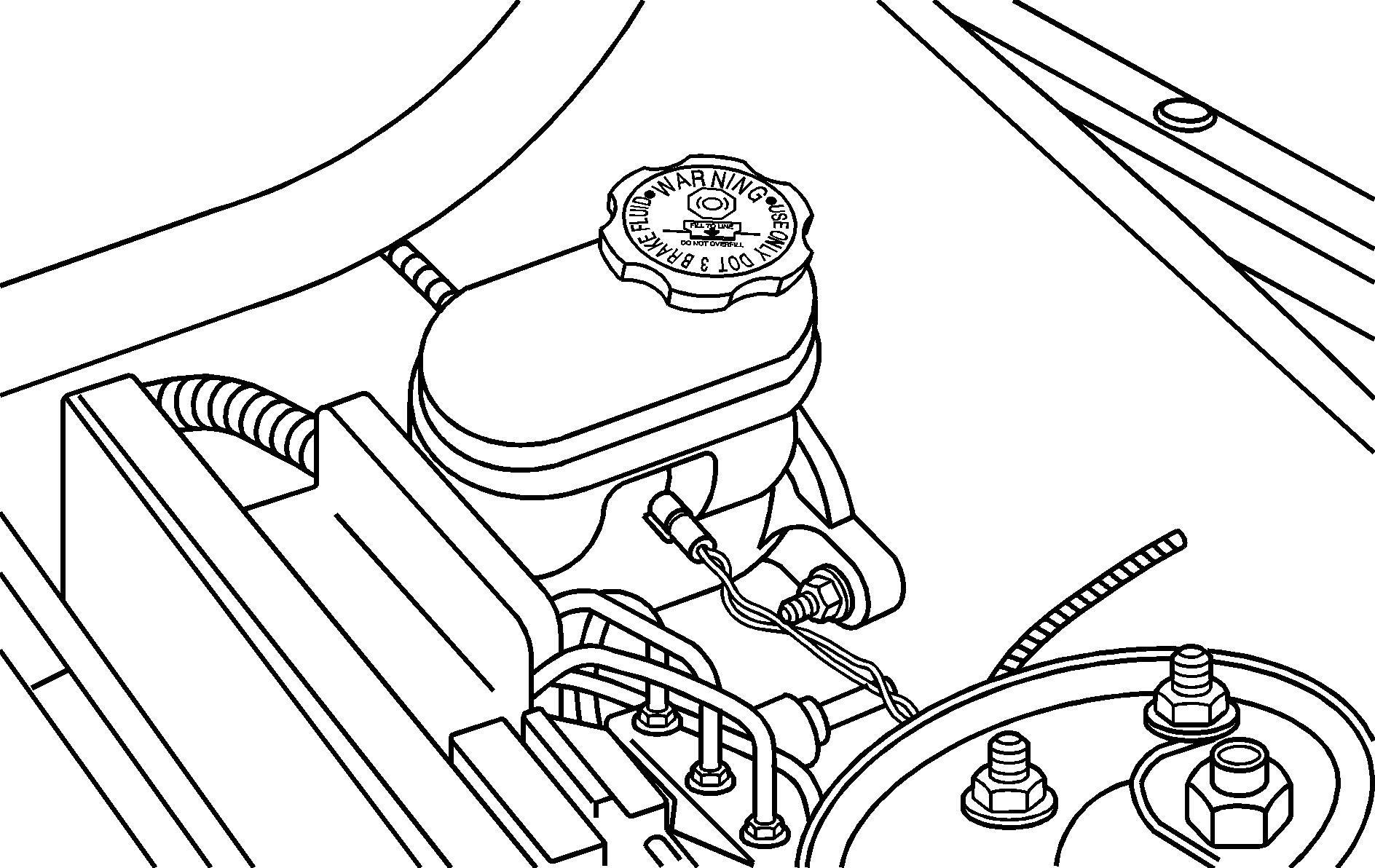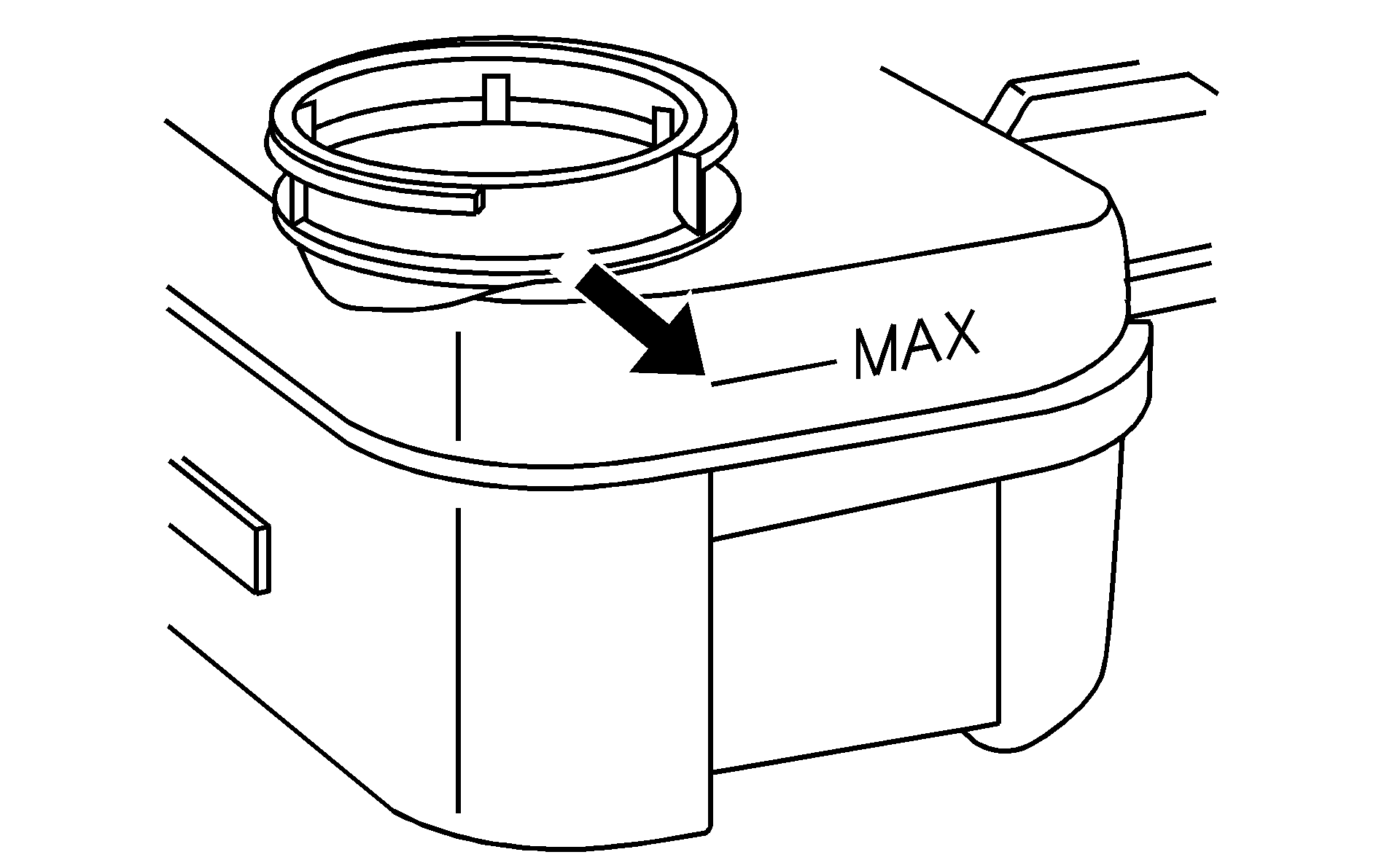Brake Fluid

Your brake master cylinder reservoir on the driver's side of the engine compartment. It is filled with DOT-3 brake fluid.
There are only two reasons why the brake fluid level in the reservoir might go down. The first is that the brake fluid goes down to an acceptable level during normal brake lining wear. When new linings are put in, the fluid level goes back up. The other reason is that fluid is leaking out of the brake system. If it is, you should have your systems repaired, since a leak means that sooner or later your brakes will not work well, or will not work at all.
So, it is not a good idea to "top off" your brake fluid. Adding brake fluid will not correct a leak. If you add fluid when your linings are worn, then you will have too much fluid when you get new brake linings. You should add (or remove) brake fluid, as necessary, only when work is done on the brake and/or clutch hydraulic system.
Caution: If too much brake fluid is added, it can spill on the engine and burn, if the engine is hot enough. You or others could be burned, and the vehicle could be damaged. Add brake fluid only when work is done on the brake hydraulic system.
When your brake fluid falls to a low level, your brake warning light will come on. See Brake System Warning Light .
Checking Brake Fluid

You can check the brake fluid level without removing the reservoir cap by just looking at the brake fluid reservoir. The fluid level should be above the plastic seam in the reservoir. If it isn't, have your brake system checked to see if there is a leak. After work has been done on the brake hydraulic system, make sure the level is above the seam, near the base of the filler neck.
What to Add
When you do need brake fluid, use only DOT-3 brake fluid such as Delco Supreme II (GM P/N 12377967 or P/N 21007652). Use new brake fluid from a sealed container only. Use new brake fluid from a sealed container only. Always clean the brake fluid reservoir cap and the area around the cap before removing it. This will help keep dirt from entering the reservoir.
Caution: With the wrong kind of fluid in the brake hydraulic system, the brakes might not work well. This could cause a crash. Always use the proper brake fluid.
Notice:
• Using the wrong fluid can badly damage brake system parts. For example,
just a few drops of mineral-based oil, such as engine oil, in your brake system can
damage brake system parts so badly that they will have to be replaced. Do not let
someone put in the wrong kind of fluid. • If you spill brake fluid on your vehicle's painted surfaces, the paint
finish can be damaged. Be careful not to spill brake fluid on your vehicle. If you
do, wash it off immediately. See
Appearance Care
.
Brake Wear
Your vehicle has front disc brakes and rear drum brakes.
Disc brake pads have built-in wear indicators that make a high-pitched warning sound when the brake pads are worn and new pads are needed. The sound may come and go or be heard all the time your vehicle is moving (except when you are pushing on the brake pedal firmly).
Caution: The brake wear warning sound means that soon the brakes will not work well. That could lead to an accident. When the brake wear warning sound is heard, have the vehicle serviced.
Notice: Continuing to drive with worn-out brake pads could result in costly brake repair.
Some driving conditions or climates may cause a brake squeal when the brakes are first applied or lightly applied. This does not mean something is wrong with your brakes.
Do not rely strictly on the ware indicators to determine if your brake pads need replacement. A visual inspection still need to be performed each time the tires are rotated.
Properly torqued wheel nuts are necessary to help prevent brake pulsation. When tires are rotated, inspect brake pads for wear and evenly tighten wheel nuts in the proper sequence to Saturn specifications.
The rear drum brakes do not have wear indicators, but if you ever hear a rear brake rubbing noise, have the rear brake linings inspected immediately. The rear drum brakes have an inspection hole on the back side of the brake assembly. The inspection hole allows a quick visual inspection for brake shoe wear on the leading brake shoe only. For an accurate inspection, the rear brake drum should be removed and inspected each time the tires are remove for rotation or changing. When you have the front brake pads replaced, have the rear brakes inspected, too.
Brake linings should always be replaced as complete axle sets. For more information, see the Owner Inspections and Services section in this handbook.
Brake Pedal Travel
See your retailer if the brake pedal does not return to normal height, or if there is a rapid increase in pedal travel. This could be a sign of brake trouble.
Brake Adjustment
Both disc and drum brakes have the ability to adjust themselves for wear whenever you make a brake stop. However, if you almost never make a moderate or heavier stop, then your rear drum brakes might not adjust correctly. If you drive in that way, then -- very carefully -- make a few moderate brake stops about every 1,000 miles (1,600 km), so your brakes will adjust properly.
Replacing Brake System Parts
The braking system on a vehicle is complex. Its many parts have to be of top quality and work well together if the vehicle is to have really good braking. Your vehicle was designed and tested with top-quality brake parts. When you replace parts of your braking system -- for example, when your brake linings wear down and you need new ones put in -- be sure you get new approved Saturn replacement parts. If you do not, your brakes may no longer work properly. For example, if someone puts in brake linings that are wrong for your vehicle, the balance between your front and rear brakes can change -- for the worse. The braking performance you have come to expect can change in many other ways if someone puts in the wrong replacement brake parts.
Parking Brake Adjustment
Check parking brake adjustment at least once a year.
- Park on a slight downhill grade.
- Apply the brake pedal
- Fully apply the parking brake. The red "BRAKE" warning light should come on when the ignition is turned on an "ON" position.
- With the engine running and transmission in Neutral (N), slowly let up on the brake pedal until the car is held in place by only the parking brake.
If the parking brake will not hold the vehicle or the "BRAKE" warning light does not stay on, have your vehicle serviced as soon as possible.
